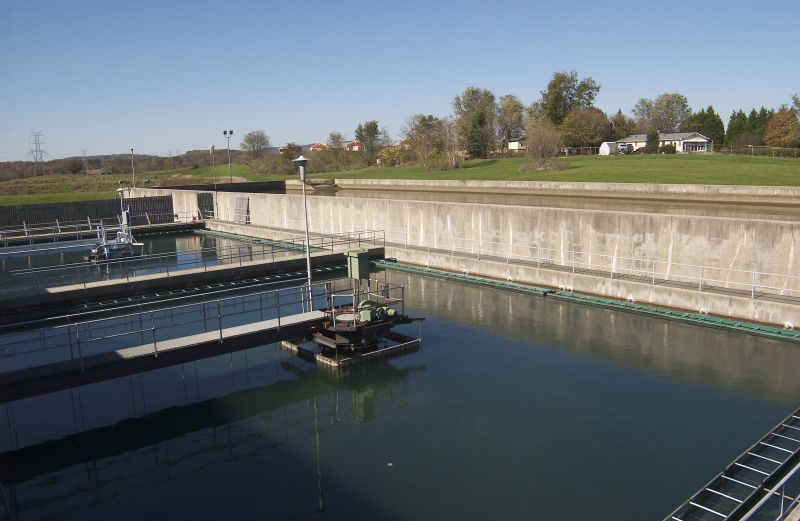Intensified Flue Gas Desulfurization Water Treatment for Reuse, Solidification and Discharge
Published on by Water Network Research, Official research team of The Water Network in Academic
The University of Kentucky Center for Applied Energy Research has received a $740,000 grant from the United States Department of Energy’s National Energy Technology Laboratory (DOE NETL) that seeks to lower the cost for and improve the efficiency of industrial water treatment.
The grant, titled “Intensified Flue Gas Desulfurization Water Treatment for Reuse, Solidification, and Discharge,” will help advance UK CAER’s impressive portfolio of water treatment research, a critically important project for Kentucky companies.

Representative image, source: Wikimedia Commons, Labeled for Reuse
“This grant will strengthen our wastewater research program,” said Kunlei Liu, associate director for research at UK CAER. “Our team is developing and demonstrating cost-effective and practical technologies for reducing and managing wastewater, benefiting Kentucky companies and strengthening Kentucky’s industrial sector.”
Flue-gas desulfurization (FGD) technology is used to remove sulfur dioxide from exhaust flue gas at fossil fuel power plants. FGD technology is an important environmental mitigation process, as it also captures portions of heavy metals created during power generation, including selenium, arsenic and mercury.
UK CAER’s project seeks to intensify the traditional water treatment process, thereby lowering the cost for industry, said Xin Gao, senior research engineer at the center, and the principal investigator for the funded project.
“This next-stage technology currently being developed at UK CAER has a potential to intensify and/or integrate the conventional wastewater treatment process,” Gao said. “If successful, this technology would significantly lower the cost for water treatment.”
This UK CAER project seeks to utilize electrocoagulation, flotation and nanofiltration — via membranes –— to remove as many heavy metals and soluble salts from the water as possible, and then recycle that water into the system. This process will reduce the amount of fresh water needed and make landfilling those particulates easier.
As part of the project, the UK CAER research team will be evaluating the effectiveness of electrocoagulation and long-term operation of membrane filtration as well as the ability to consistently create “landfillable solids” while meeting government regulations.
Source: UK Research
Media
Taxonomy
- Industrial Water Treatment
- Purification
- Industrial Water Treatment
- Industrial Water Reuse
- Industrial Water Managment
- Integrated Urban Water Management
- Industrial Use
- Water Management
- Total Dissolved Solids (TDS)